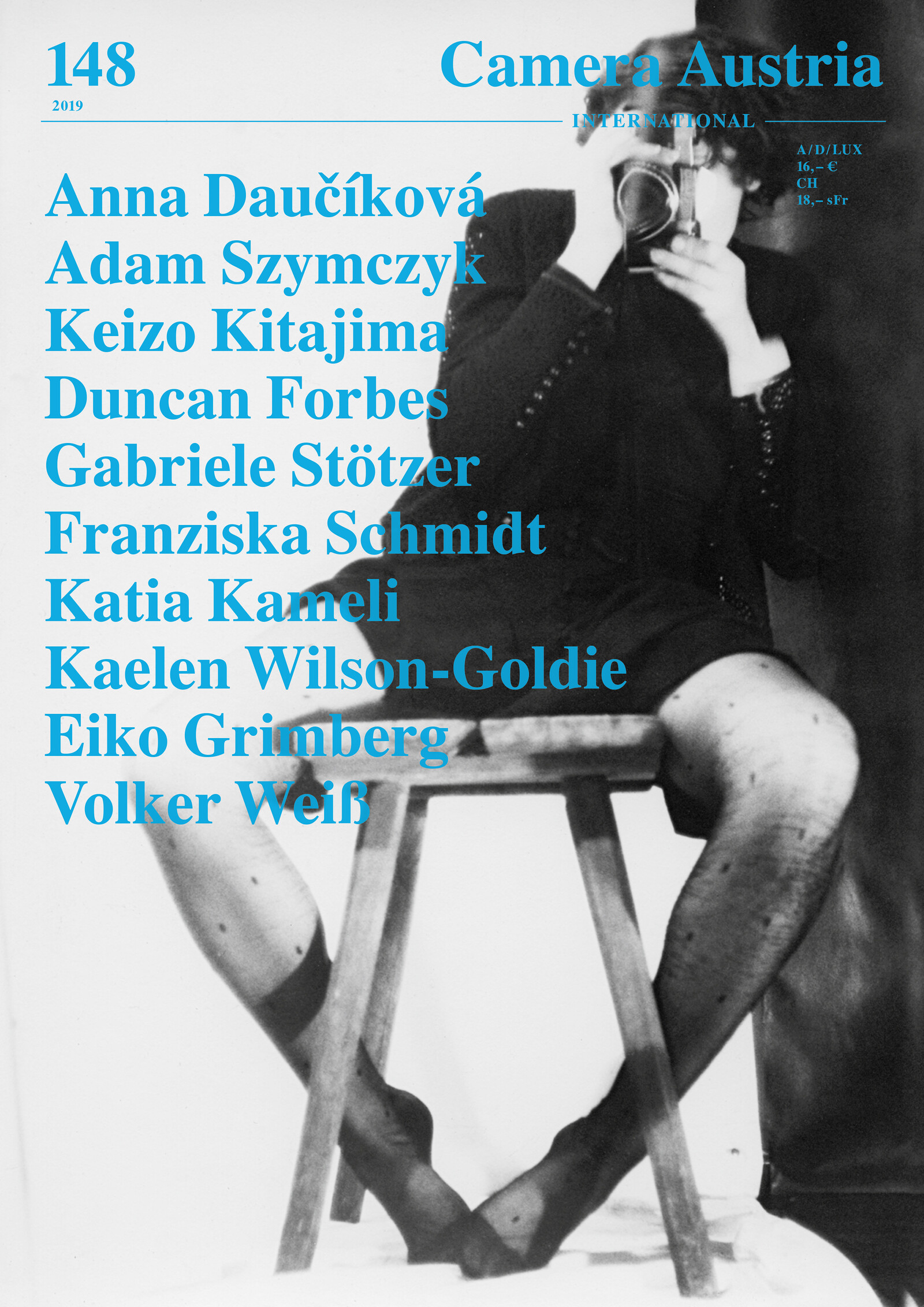Order here.
The topic of systemic change was the point of departure for our reflections on the issue at hand. The positions introduced here not only directly reference the related political transformations but also pursue the question of how far a political system reaches into everyday social life. Also thematized are the possible approaches taken by artists, then and now, in addressing this in their artwork.
In her conversation with Adam Szymczyk, Anna Daučíková talks about her day-to-day life in Moscow during the 1980s. She spent over ten years in the city, a time distinguished by hardship and possible persecution, but also by freedom and networking in the private sphere, which had a lasting impact on her life. She speaks of the nascent change in the system and of body politics: “For instance, when you were traveling in the Soviet Union and wanted to stay unrecognized, you had to stop being curious about your surroundings. You simply showed indifference, looking nowhere.”
Duncan Forbes, in his contribution on Keizo Kitajima, explores how a confrontation with (Eastern) European daily life in the years 1983 and 1984 altered Kitajima’s “perceptual system” and thus also his practice as a street photographer. Forbes associates this change with the increasing commodification of the subject during the 1980s: “What is so interesting about Kitajima is that he appears to sense the historic transformation of the subject underway. He searches for a formal means to bring his intuition to life.
Franziska Schmidt situates the exuberant, cross-media activity of Gabriele Stötzer in the context of the GDR in the 1980s and describes how the (cultural-)political efforts to suppress individual experience merely served to encourage the artist to uncompromisingly position herself and her work. In this vein, she reflects on topics like female identity, vulnerability, and her own role within socialist society. “It [Stötzer’s work] is directed not only against traditional role models, but also against the elimination of individual personality as practiced by the former system GDR.”
It is the “circulation of images and the stories we tell ourselves about the past” that Katia Kameli investigates in her film trilogy “Le Roman Algérien” (2016, 2017, 2019), which Kaelen Wilson-Goldie more closely examines in this issue. In the first film, Kameli focuses on a kiosk in downtown Algiers which sells old nostalgic photos and postcards. In the two subsequent films, she then probes themes of democracy and the role of women in Algeria, as well as the absence of pictures during the 1990s as the Algerian Civil War was raging.
Based on the long-term project “Zehner Jahre” by Eiko Grimberg, initiated in 2010, Volker Weiß scrutinizes the survival of fascist symbols in present times and examines the ways in which remnants of architectures and insignia, created in conjunction with political ideologies, are still today visible in public space: “The pictures provide information about the tense relationship between a desire for long-lasting symbolic dominance on the one hand and the upheavals triggered by historical-political transformation on the other.”
The issue is rounded off by by Erik van der Weijde’s series “Talking Books,” for which he interviewed Dutch artist Mariken Wessels this time, and a comprehensive review section with responses to recent national and international exhibitions including Trevor Paglen, Barbican Centre, London; Bergen Assembly, Bergen; Objects Recognized in Flashes, mumok, Vienna; Color Mania, Fotomuseum Winterthur; Grada Kilomba, Bildmuseet, Umeå; Antanas Sutkus, Zephyr, Mannheim, and many others.
Following the tradition of recent years, our subscribers will receive a poster insert with this issue. We are very pleased that Seiichi Furuya, co-founder of Camera Austria and recipient of the Austrian State Prize for Artistic Photography in October 2019, agreed to contribute his work in this respect.
